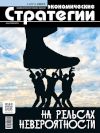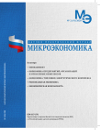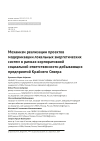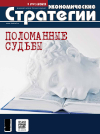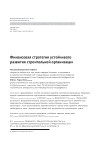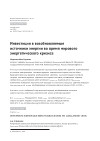Specifics of State Planning of Economic Sectors in the Far Eastern Federal District
DOI: 10.33917/es-5.203.2025.86-91
The article examines special features of state planning for economic sectors in the Far Eastern Federal District based on forecasting the socio-economic development of the regions which constitute it. Factors determining the general principles of forecasting economic development up to 2030 are analyzed. The characteristics of macro-region include migration and natural decline, territorial disintegration and low transport connectivity of the regions. Active use of economic (preferential) regimes requires special attention to forecasting shortfall in revenues of the Russian Federation’s budget system and to assessing the positive effect on economic sectors. It is concluded that general approach to the economic development of the Russian Far East macro-region could be a sustainable development model based on a set of balanced indicators characterizing the overall development of the economy and settlement system within the boundaries of existing and prospective cities and rural areas.
References:
1. Demograficheskaya kharakteristika Dal’nevostochnogo federal’nogo okruga — 2023 [Demographic Characteristics of the Far Eastern Federal District — 2023]. FANU “Vostokgosplan”, available at: https://vostokgosplan.ru/wp-content/uploads/demograficheskaja-harakteristika-dfo.pdf
2. Prokapalo O.M., Bardal’ A.B., Mazitova M.G., Suslov D.V. Ekonomicheskaya kon”yunktura v Dal’nevostochnom federal’nom okruge v 2021 g. [Economic Situation in the Far Eastern Federal District in 2021]. Prostranstvennaya ekonomika, 2022, vol. 18, no 2, pp. 135–182, available at: https://dx.doi.org/10.14530/se.2022.2.135-182
3. Zhurakovskiy V., Novopashina A., Grishin D., Bulyga Ye. Polustrukturnaya model’ ekonomiki Dal’nevostochnogo makroregiona [Semi-structural Model of the Economy of the Far Eastern Macroregion]. TSB RF. Seriya dokladov ob ekonomicheskikh issledovaniyakh, 2024, no 127 (fevral’), available at: https://cbr.ru/StaticHtml/File/158679/wp_127.pdf
4. Bukhonova N.M., Manukovskiy R.I., Yakovlev A.V. Statisticheskaya otsenka ekonomicheskogo potentsiala na osnove mnozhestvennogo regressionnogo analiza [Statistical Assessment of Economic Potential Based on Multiple Regression Analysis]. Sovremennaya ekonomika: problemy i resheniya, 2020, no 7, pp. 25–36, DOI: https://doi.org/10.17308/meps.2020.7/2394
5. Andreev V.A. Determinanty migratsionnoy aktivnosti v kontekste vospriyatiya naseleniem Primorskogo kraya urovnya sotsial’nogo blagopoluchiya [Determinants of Migration Activity in the Context of the Perception of the Level of Social well-being by the Population of Primorsky Krai]. Territoriya novykh vozmozhnostey. Vestnik Vladivostokskogo gosudarstvennogo universiteta ekonomiki i servisa, 2020, vol. 12, no 2, pp. 7–18, DOI 10.24866/VVSU/2073-3984/2020-2/007-018
6. Osnovnye rezul’taty prognozirovaniya sotsial’no-ekonomicheskogo razvitiya Dal’nevostochnogo federal’nogo okruga 2030 g. [Main Results of Forecasting the Socio-economic Development of the Far Eastern Federal District in 2030]. FANU “Vostokgosplan”, available at: https://vostokgosplan.ru/wp-content/uploads/osnovnye-rezultaty-prognozirovanija-socialno-jekonomicheskogo-razvitija-dalnevostochnogo-federalnogo-okruga-2030.pdf






